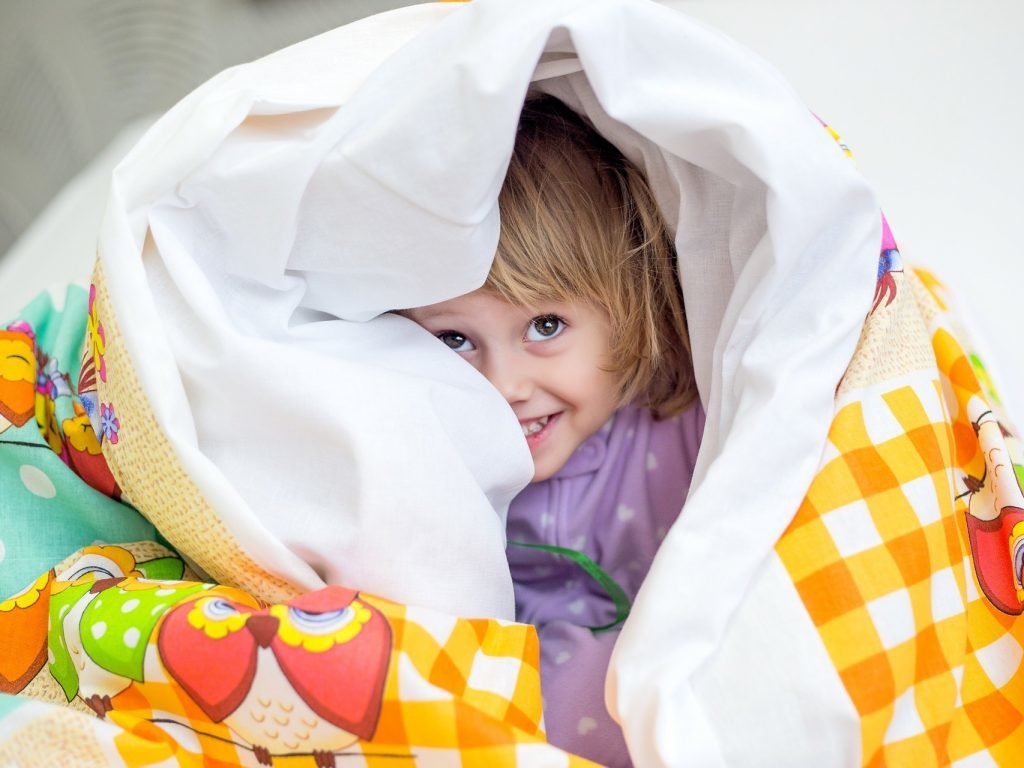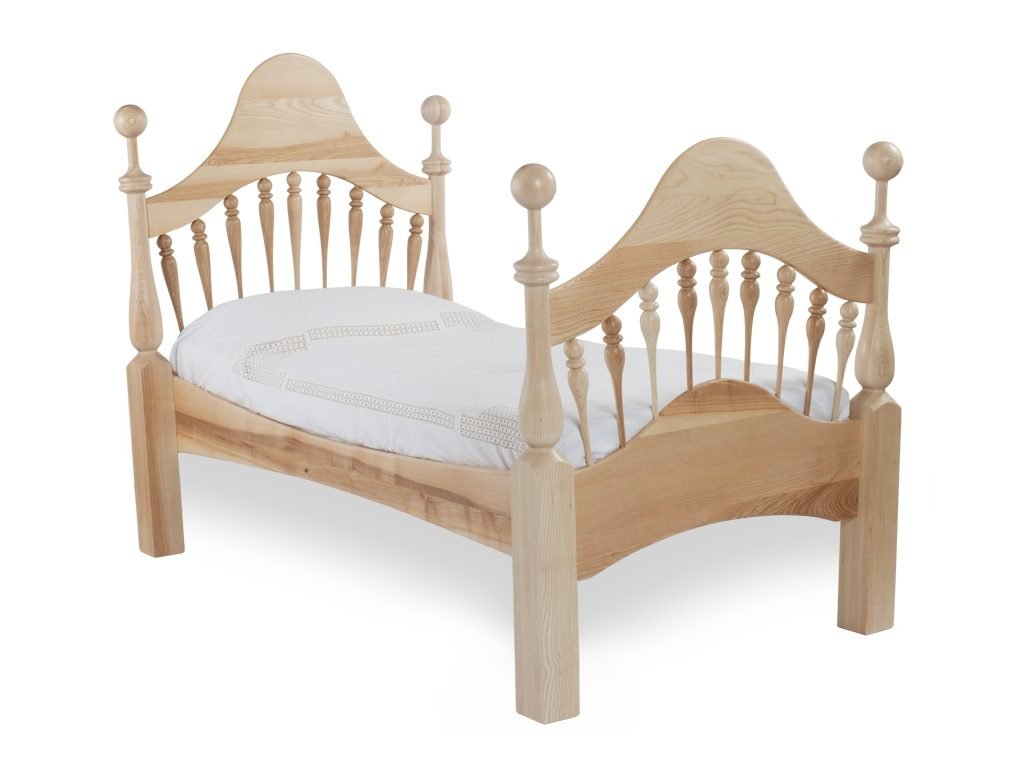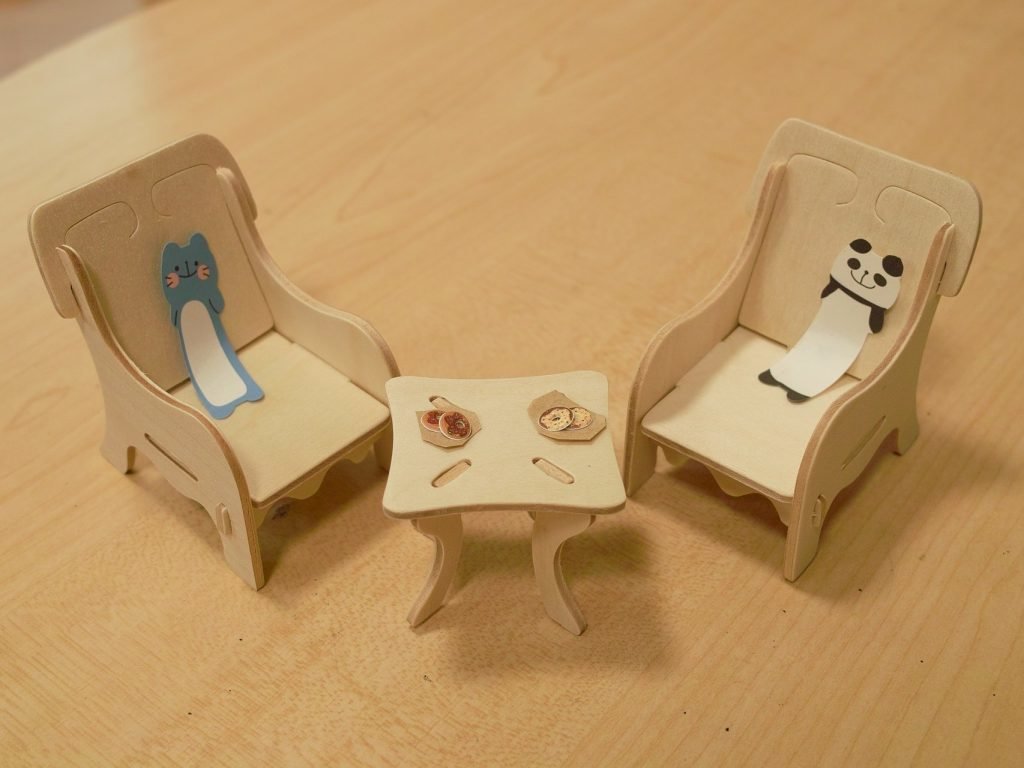
Mattresses come in several widely differing qualities, and two common types: coil-spring and, foam.
You are more likely to be offered a coil mattress. In UK the acceptable thickness for a mattress is 200mm, however for your child’s bed you will be offered a choice of mattress from a measly 100mm thick. (By contrast the US market standard mattress thickness is a whopping 300mm.)
Buying a cheap mattress is a false economy for two reasons: first, it just won’t spread the weight and will put direct pressure on the bed slats that support it which could break, and; secondly, and most importantly, it will be uncomfortable for your child.
They will not sleep well, and you are compromising the health your child’s spine which can lead to long-term back problems in adulthood.
When you choose a mattress, things you will feel without knowing what they are, are: coil-count (the more coils, the more support it offers); the gauge [thickness of the wire] of the coil spring gives the mattress the firmness, (so a soft quality mattress will have coils of 1.63mm diameter wire, a firm mattress may have 1.93mm diameter wire coils).
Ask is the mattress flippable; does it have good padding or ticking (this is the soft panel between your body and the springs), on good mattresses this padding is deep and very luxurious and has a soft pad on one side of the mattress, and a softer pad on the other side so that you can flip the mattress to enjoy your choice of luxury.
Foam mattresses have two basic types: Latex, or polyurethane. These mattresses can be wonderfully comfortable and warm. Often the foam is laminated one layer of firmness over another so that the mattress is not simply a big sponge, but delivers a good core foundation of support with a softer top layer.
Check for allergies related to latex before using one for your child.
The newest Waterbed designs are built to look like the familiar mattress/foundation, with a water-filled core providing the support and layers of upholstery for insulation and surface comfort.
Quality construction is especially critical when water is involved, so look for assurance that the vinyl and seaming are designed for maximum durability.
Upholstery layers
Upholstery layers cover the mattress and provide cushioning and comfort. Some manufacturers call the mattress core the “support layer” and the upholstery layer the “comfort layer.” The upholstery layer consists of three parts: the insulator, the middle upholstery, and the quilt.
The insulator separates the mattress core from the middle upholstery. It is usually made of fibre or mesh and is intended to keep the middle upholstery in place.
The middle upholstery comprises all the material between the insulator and the quilt. It is usually made from materials which are intended to provide comfort to the sleeper, including regular foam, viscoelastic foam, felt, polyester fibres, cotton fibres, convoluted (“egg-crate”) foam, and non-woven fibre pads.
The quilt is the top layer of the mattress. Made of light foam or fibres stitched to the underside of the ticking, it provides a soft surface texture to the mattress and can be found in varying degrees of firmness.
The protective fabric cover which encases the mattress is called ticking. It is usually made to match the foundation and comes in a wide variety of colours and styles. Most ticking is made of synthetic fibres like polyester, or acrylic; or of natural materials such as latex, cotton, silk, and wool.
Mattress Protector
A mattress protector is an item of removable bedding that sits on top of or encases a mattress to provide protection to the mattress.
Some mattress protectors also provide protection to the individual sleeping on the mattress from allergens and irritants such as dust mites, bed bugs, mould, and dead skin (like dandruff).
Although a mattress can be vacuumed, it is very difficult to clean one thoroughly once it has become marked.
An unprotected mattress can become marked or stained quite quickly as natural perspiration produced throughout the night passes through a standard fitted sheet and creates a telltale yellowish brown tidemark where it has been absorbed into the upper surface of the mattress.
Mattresses are also susceptible to many other contaminants, in the case of children theses are commonly urine and vomit.
A mattress protector should be used if the child is known to be susceptible to allergies. A typical mattress can be home to millions of tiny dust mites.
These creatures produce waste products that can irritate the lining of the airways and lungs and particularly with children can bring on allergic reactions, asthma and can irritate skin conditions such as eczema.
Not all mattress protectors are waterproof, some are designed to provide ‘wear and tear’ protection for the mattress and are available in the form of a lightly quilted fitted sheet. These will only provide minimal protection against liquids and little or no protection from dust mites.
Waterproof and breathable mattress protects can provide protection against many allergens, however, as well as keeping the mattress clean by securing it from absorbing body excretions (such as sweat) or other liquids resulting from spills.
For protection against bed bugs, the mattress and the box spring must be fully enclosed with no possibly opening.
Duvets
Nowadays, a duvet is sometimes filled with silk, wool, or artificial fibres (such as polyester batting or other artificial material). It is sometimes confused with a comforter, although comforters go on top of the traditional sheets and blankets and are primarily decorative while duvets are used alone.
Tog ratings and temperature: Check the tog rating on the duvet and remember the higher the rating the greater the warmth.
For a good safe night’s sleep, babies need to be warm but not too hot. A steady room temperature for your sleeping baby and child is 16-20ºC.
Buy a room thermometer to keep an eye on the temperature and check if your baby is sweating or feels hot to the touch to see if you need to adjust clothing or bedding.
Pillows
Just as the bed should provide good support for the child, the pillow should give the right cushioning to position the head and neck. It should hold your child’s head in the same relation to their shoulders and spine as if they were standing with correct upright posture.
If your child sleeps on their side, you may want a fairly firm pillow to give their head and neck extra support. If they sleep on their back, try a medium-firm pillow to cradle their head with more give.
And if your child sleeps on their stomach (although some physicians caution against this position), choose a soft pillow to lessen the strain to the neck.
Internally, a pillow comprises a filler made from foam, synthetic fills,, silk fibre, feathers, or down.
There are many varieties of hypoallergenic varieties of pillow. The pillow slip encases the filler with a cover made of cloth or silk.
Even with regular washing, pillows tend to accumulate large amounts of dust and vast numbers of microbes among the fill and it is recommended that they be replaced every few years, especially for children with allergies.

